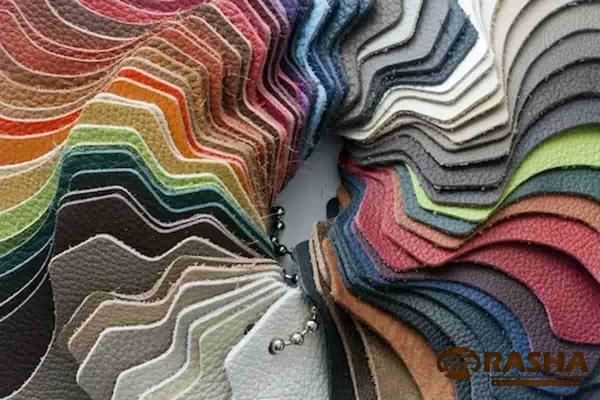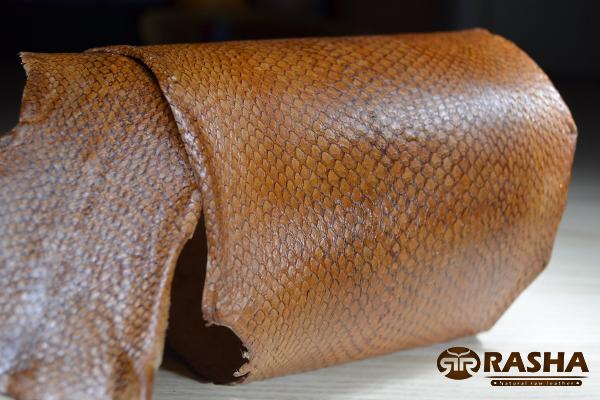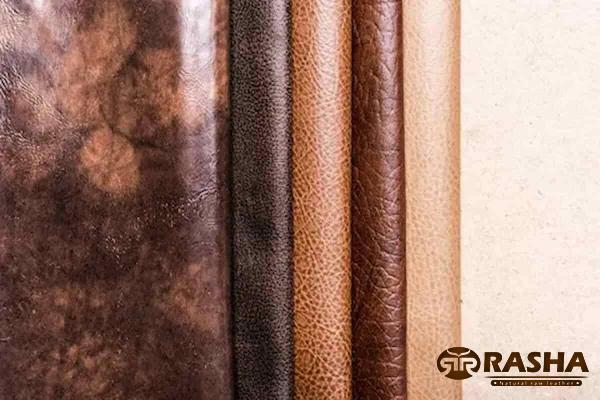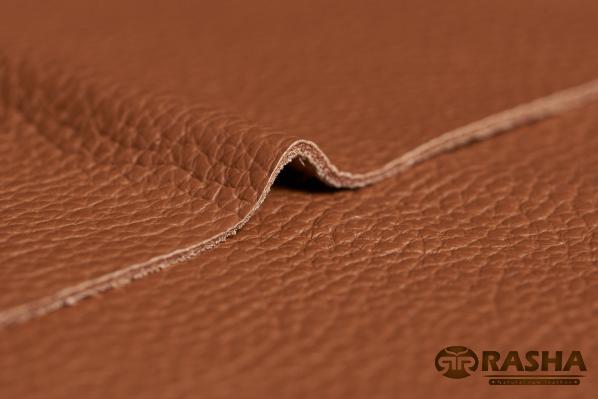Synthetic leather, also known as artificial leather or faux leather, is a versatile and sustainable material that has gained popularity in recent years. With advancements in technology, synthetic leather has become an attractive alternative to genuine leather for various industries, including fashion, automotive, and furniture. This article aims to provide a comprehensive summary of the synthetic leather industry, highlighting its benefits, production process, applications, and market trends. Benefits of Synthetic Leather: 1. Sustainability: One of the major advantages of synthetic leather is its eco-friendliness. Unlike genuine leather, which is derived from animal hides, synthetic leather is typically made from polyurethane (PU) or polyvinyl chloride (PVC), both of which are more sustainable options. The production of synthetic leather requires fewer natural resources, reduces waste, and lessens environmental impact. 2. Cost-effective: Synthetic leather is generally more affordable compared to genuine leather. The manufacturing process of synthetic leather allows for better control over cost, making it an economical choice for businesses looking to reduce production expenses without compromising on quality. 3. Versatility: Synthetic leather can be produced in a wide range of colors, patterns, and textures, providing designers and manufacturers with endless options for customization. This versatility makes it suitable for various applications, ranging from fashion accessories to upholstery, footwear, and automobile interiors. Production Process: The production of synthetic leather involves several steps, including polymerization, coating, and finishing. The most commonly used materials are PU and PVC, each with its unique production process. 1. Polyurethane (PU) Synthetic Leather: The production of PU synthetic leather involves the following steps: a. Polymerization: Raw materials, such as polyester or polyether polyols and diisocyanates, are combined to form a polyurethane prepolymer. b. Coating: The prepolymer is coated onto a fabric substrate, which is typically made of polyester. c. Embossing and Printing: Depending on the desired texture and pattern, the coated fabric may undergo an embossing process to create a grain-like appearance. Printing techniques can be employed to add further design elements. d. Finishing: The material is then treated with various finishing agents to improve its durability, flexibility, and aesthetics. 2. Polyvinyl Chloride (PVC) Synthetic Leather: The production of PVC synthetic leather follows a similar process, with slight variations in the coating and finishing steps. PVC synthetic leather is produced by coating a fabric substrate with a PVC resin and plasticizers to provide flexibility. It is widely used in industries where durability and resistance to weathering are important considerations, such as automotive interiors. Applications of Synthetic Leather: 1. Fashion Industry: Synthetic leather has gained immense popularity in the fashion world as a cruelty-free and sustainable alternative to genuine leather. It is widely used in the production of handbags, wallets, shoes, belts, and other accessories. The ability to mimic the luxurious look and feel of genuine leather, combined with the wide range of colors and textures available, makes synthetic leather a preferred choice for fashion designers. 2. Automotive Sector: Synthetic leather is increasingly used in automobile interiors, replacing genuine leather due to its cost-effectiveness and durability. It offers excellent resistance to wear and tear, is easy to clean, and can be customized to match specific design requirements. The automotive industry has recognized the benefits of synthetic leather in reducing costs without compromising on quality or aesthetics.

leather
 3. Furniture and Upholstery: Synthetic leather finds extensive use in the furniture industry, offering an affordable and sustainable alternative to genuine leather upholstery. It is widely used in sofas, chairs, and other furniture items. Synthetic leather not only provides a wide range of design options but also offers easy maintenance and durability, making it suitable for high-traffic areas. Market Trends: Synthetic leather has witnessed significant growth in demand globally, attributed to the increasing consumer awareness about sustainability and ethical concerns associated with genuine leather. In addition to fashion, automotive, and furniture industries, synthetic leather is also used in sectors such as aviation, electronics, and healthcare. 1. Rising Demand in Developing Markets: Developing countries, such as China, India, and Brazil, are experiencing a surge in demand for synthetic leather due to rapid urbanization, growing disposable incomes, and changing consumer preferences. These regions also witness increased manufacturing activities, driving the demand for affordable and sustainable materials. 2. Technological Advancements: Continuous advancements in polymerization techniques, coating technologies, and surface treatments have led to the production of synthetic leathers with enhanced qualities and performance. Manufacturers are focusing on developing materials that closely resemble genuine leather in terms of appearance, texture, and durability. 3. Growing Interest in Vegan and Sustainable Products: The rise in veganism and preference for sustainable products has directly impacted the increased demand for synthetic leather. Conscious consumers are actively seeking cruelty-free and environmentally friendly alternatives, making synthetic leather an attractive choice. Conclusion: Synthetic leather has emerged as a versatile and sustainable alternative to genuine leather across various industries. With its eco-friendly production process, cost-effectiveness, and customizable options, synthetic leather has gained significant popularity. The fashion, automotive, and furniture industries, among others, continue to drive demand for synthetic leather products. As consumer awareness of sustainability and ethical concerns grows, the market for synthetic leather is expected to expand further, prompting more innovations and advancements in this dynamic industry.I. Current Scenario of the Synthetic Leather Market: The global synthetic leather market has been experiencing steady growth over the past few years. According to a report by Grand View Research, the market size was valued at $28.2 billion in 2020 and is projected to reach $37.9 billion by 2028, registering a CAGR of 3.8% from 2021 to 2028. This growth can be attributed to several factors such as the rising demand for sustainable materials, the increasing popularity of vegan products, and the cost-effectiveness of synthetic leather compared to genuine leather. The fashion industry accounts for a significant share of the synthetic leather market. With a growing number of consumers becoming sensitive to ethical concerns and environmental issues associated with the use of animal hides, synthetic leather has gained considerable traction. Major fashion brands have started incorporating synthetic leather into their collections to cater to this growing demand for cruelty-free and sustainable products. II. Increasing Demand for Sustainable Fashion: As sustainability becomes a key focus for fashion brands, synthetic leather offers a compelling solution.
3. Furniture and Upholstery: Synthetic leather finds extensive use in the furniture industry, offering an affordable and sustainable alternative to genuine leather upholstery. It is widely used in sofas, chairs, and other furniture items. Synthetic leather not only provides a wide range of design options but also offers easy maintenance and durability, making it suitable for high-traffic areas. Market Trends: Synthetic leather has witnessed significant growth in demand globally, attributed to the increasing consumer awareness about sustainability and ethical concerns associated with genuine leather. In addition to fashion, automotive, and furniture industries, synthetic leather is also used in sectors such as aviation, electronics, and healthcare. 1. Rising Demand in Developing Markets: Developing countries, such as China, India, and Brazil, are experiencing a surge in demand for synthetic leather due to rapid urbanization, growing disposable incomes, and changing consumer preferences. These regions also witness increased manufacturing activities, driving the demand for affordable and sustainable materials. 2. Technological Advancements: Continuous advancements in polymerization techniques, coating technologies, and surface treatments have led to the production of synthetic leathers with enhanced qualities and performance. Manufacturers are focusing on developing materials that closely resemble genuine leather in terms of appearance, texture, and durability. 3. Growing Interest in Vegan and Sustainable Products: The rise in veganism and preference for sustainable products has directly impacted the increased demand for synthetic leather. Conscious consumers are actively seeking cruelty-free and environmentally friendly alternatives, making synthetic leather an attractive choice. Conclusion: Synthetic leather has emerged as a versatile and sustainable alternative to genuine leather across various industries. With its eco-friendly production process, cost-effectiveness, and customizable options, synthetic leather has gained significant popularity. The fashion, automotive, and furniture industries, among others, continue to drive demand for synthetic leather products. As consumer awareness of sustainability and ethical concerns grows, the market for synthetic leather is expected to expand further, prompting more innovations and advancements in this dynamic industry.I. Current Scenario of the Synthetic Leather Market: The global synthetic leather market has been experiencing steady growth over the past few years. According to a report by Grand View Research, the market size was valued at $28.2 billion in 2020 and is projected to reach $37.9 billion by 2028, registering a CAGR of 3.8% from 2021 to 2028. This growth can be attributed to several factors such as the rising demand for sustainable materials, the increasing popularity of vegan products, and the cost-effectiveness of synthetic leather compared to genuine leather. The fashion industry accounts for a significant share of the synthetic leather market. With a growing number of consumers becoming sensitive to ethical concerns and environmental issues associated with the use of animal hides, synthetic leather has gained considerable traction. Major fashion brands have started incorporating synthetic leather into their collections to cater to this growing demand for cruelty-free and sustainable products. II. Increasing Demand for Sustainable Fashion: As sustainability becomes a key focus for fashion brands, synthetic leather offers a compelling solution.
Specifications of leather
 The production of genuine leather is known to have negative environmental impacts, including deforestation for cattle grazing and water pollution caused by tanneries. Synthetic leather, on the other hand, requires fewer natural resources, reduces waste, and minimizes pollution during the manufacturing process. Moreover, advancements in technology have enabled synthetic leather manufacturers to develop high-quality materials that closely resemble genuine leather in terms of appearance, texture, and durability. These advancements have further fueled the demand for synthetic leather in the fashion industry. III. Automotive Industry Embracing Synthetic Leather: The automotive industry has also witnessed a significant shift towards the adoption of synthetic leather. Traditionally, genuine leather was the material of choice for car interiors. However, due to its high cost, limited availability, and sustainability concerns, synthetic leather has emerged as a viable alternative. Synthetic leather offers several advantages over genuine leather in automotive applications. It is more resistant to wear and tear, easy to clean, and can be customized to match specific design requirements. Additionally, synthetic leather offers consistent quality, which is critical for automotive manufacturers striving to provide a uniform look and feel across their product lines. IV. Furniture and Upholstery Industry: Synthetic leather has gained substantial popularity in the furniture and upholstery industry as well. The availability of a wide range of colors, patterns, and textures makes it an attractive choice for designers and manufacturers. Synthetic leather upholstery provides durability, water resistance, and easy maintenance, making it suitable for both residential and commercial applications. Furthermore, the cost-effectiveness of synthetic leather plays a crucial role in the furniture industry, where profit margins can be tight. By utilizing synthetic leather, manufacturers can offer affordable furniture without compromising on quality or aesthetics. V. Technological Advancements in Synthetic Leather Production: Continuous advancements in manufacturing techniques and materials have contributed to the improved quality and performance of synthetic leather. Innovations in polymerization, coating technologies, and surface treatments have led to the development of synthetic leathers with enhanced breathability, abrasion resistance, and UV stability. New materials, such as thermoplastic polyurethane (TPU), have gained prominence in the synthetic leather market. TPU offers various advantages over traditional materials, including improved elasticity, higher tear strength, and better resistance to chemicals and abrasion. The versatility of synthetic leather allows for the incorporation of additional functionalities, such as fire resistance or anti-microbial properties, to meet specific industry requirements. VI. Challenges in the Synthetic Leather Market: Despite its numerous benefits, the synthetic leather market faces several challenges.
The production of genuine leather is known to have negative environmental impacts, including deforestation for cattle grazing and water pollution caused by tanneries. Synthetic leather, on the other hand, requires fewer natural resources, reduces waste, and minimizes pollution during the manufacturing process. Moreover, advancements in technology have enabled synthetic leather manufacturers to develop high-quality materials that closely resemble genuine leather in terms of appearance, texture, and durability. These advancements have further fueled the demand for synthetic leather in the fashion industry. III. Automotive Industry Embracing Synthetic Leather: The automotive industry has also witnessed a significant shift towards the adoption of synthetic leather. Traditionally, genuine leather was the material of choice for car interiors. However, due to its high cost, limited availability, and sustainability concerns, synthetic leather has emerged as a viable alternative. Synthetic leather offers several advantages over genuine leather in automotive applications. It is more resistant to wear and tear, easy to clean, and can be customized to match specific design requirements. Additionally, synthetic leather offers consistent quality, which is critical for automotive manufacturers striving to provide a uniform look and feel across their product lines. IV. Furniture and Upholstery Industry: Synthetic leather has gained substantial popularity in the furniture and upholstery industry as well. The availability of a wide range of colors, patterns, and textures makes it an attractive choice for designers and manufacturers. Synthetic leather upholstery provides durability, water resistance, and easy maintenance, making it suitable for both residential and commercial applications. Furthermore, the cost-effectiveness of synthetic leather plays a crucial role in the furniture industry, where profit margins can be tight. By utilizing synthetic leather, manufacturers can offer affordable furniture without compromising on quality or aesthetics. V. Technological Advancements in Synthetic Leather Production: Continuous advancements in manufacturing techniques and materials have contributed to the improved quality and performance of synthetic leather. Innovations in polymerization, coating technologies, and surface treatments have led to the development of synthetic leathers with enhanced breathability, abrasion resistance, and UV stability. New materials, such as thermoplastic polyurethane (TPU), have gained prominence in the synthetic leather market. TPU offers various advantages over traditional materials, including improved elasticity, higher tear strength, and better resistance to chemicals and abrasion. The versatility of synthetic leather allows for the incorporation of additional functionalities, such as fire resistance or anti-microbial properties, to meet specific industry requirements. VI. Challenges in the Synthetic Leather Market: Despite its numerous benefits, the synthetic leather market faces several challenges.
buy leather
 One significant challenge is the misconception that synthetic leather is of lower quality compared to genuine leather. Overcoming this perception through education and proper promotion is crucial for the sustained growth of the industry. Another challenge lies in the disposal of synthetic leather products. Synthetic leather is not biodegradable and can contribute to environmental pollution if not handled properly. The industry needs to invest in research and development to find sustainable ways to recycle and reuse synthetic leather products, thus reducing their environmental impact. VII. Consumer Perception and Buying Behavior: Understanding consumer perception and buying behavior is vital for businesses operating in the synthetic leather market. Consumer preferences are shifting towards sustainable and ethically-produced products, which offers tremendous opportunities for synthetic leather manufacturers and retailers. To capitalize on this trend, businesses need to communicate the benefits of synthetic leather clearly. Emphasizing its sustainable properties, durability, and cost-effectiveness can help build a positive perception among consumers. Additionally, engaging in transparent and ethical manufacturing practices can further enhance the brand image and attract conscious consumers. VIII. Competitive Landscape and Key Players: The synthetic leather market is highly competitive, with several key players operating globally. Some prominent companies in the industry include Kuraray Co. Ltd., NAN YA Plastics Corporation, Alfatex Italia SRL, Filwel Co. Ltd., and Teijin Limited. These companies are continuously investing in research and development to innovate and improve the quality of synthetic leather products. Collaboration with fashion brands, automotive manufacturers, and furniture designers is also essential to ensure the continuous growth of the synthetic leather market. IX. Future Outlook: With increasing consumer awareness, shifting consumer preferences, and technological advancements, the future of the synthetic leather market looks promising. As sustainability becomes a primary concern for businesses and consumers alike, synthetic leather is expected to gain more traction across industries. The demand for synthetic leather is likely to increase in emerging economies as their purchasing power grows and environmental awareness rises. Moreover, the ongoing research in developing sustainable production methods and recycling technologies will improve the industry’s environmental credentials, further driving its growth. Conclusion: Synthetic leather offers a sustainable, cost-effective, and versatile alternative to genuine leather across various industries. With advancements in technology and growing consumer awareness, the demand for synthetic leather continues to rise. From fashion to automotive and furniture, businesses are embracing synthetic leather for its aesthetic appeal, durability, and eco-friendly properties. As the market expands, collaboration, innovation, and a focus on sustainability will be crucial to the success of businesses operating in the synthetic leather industry.
One significant challenge is the misconception that synthetic leather is of lower quality compared to genuine leather. Overcoming this perception through education and proper promotion is crucial for the sustained growth of the industry. Another challenge lies in the disposal of synthetic leather products. Synthetic leather is not biodegradable and can contribute to environmental pollution if not handled properly. The industry needs to invest in research and development to find sustainable ways to recycle and reuse synthetic leather products, thus reducing their environmental impact. VII. Consumer Perception and Buying Behavior: Understanding consumer perception and buying behavior is vital for businesses operating in the synthetic leather market. Consumer preferences are shifting towards sustainable and ethically-produced products, which offers tremendous opportunities for synthetic leather manufacturers and retailers. To capitalize on this trend, businesses need to communicate the benefits of synthetic leather clearly. Emphasizing its sustainable properties, durability, and cost-effectiveness can help build a positive perception among consumers. Additionally, engaging in transparent and ethical manufacturing practices can further enhance the brand image and attract conscious consumers. VIII. Competitive Landscape and Key Players: The synthetic leather market is highly competitive, with several key players operating globally. Some prominent companies in the industry include Kuraray Co. Ltd., NAN YA Plastics Corporation, Alfatex Italia SRL, Filwel Co. Ltd., and Teijin Limited. These companies are continuously investing in research and development to innovate and improve the quality of synthetic leather products. Collaboration with fashion brands, automotive manufacturers, and furniture designers is also essential to ensure the continuous growth of the synthetic leather market. IX. Future Outlook: With increasing consumer awareness, shifting consumer preferences, and technological advancements, the future of the synthetic leather market looks promising. As sustainability becomes a primary concern for businesses and consumers alike, synthetic leather is expected to gain more traction across industries. The demand for synthetic leather is likely to increase in emerging economies as their purchasing power grows and environmental awareness rises. Moreover, the ongoing research in developing sustainable production methods and recycling technologies will improve the industry’s environmental credentials, further driving its growth. Conclusion: Synthetic leather offers a sustainable, cost-effective, and versatile alternative to genuine leather across various industries. With advancements in technology and growing consumer awareness, the demand for synthetic leather continues to rise. From fashion to automotive and furniture, businesses are embracing synthetic leather for its aesthetic appeal, durability, and eco-friendly properties. As the market expands, collaboration, innovation, and a focus on sustainability will be crucial to the success of businesses operating in the synthetic leather industry.










Your comment submitted.